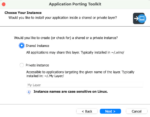
With more than 13,000 commits, the release of Linux 4.10 was not as small at Linus Torvalds was expecting. Nonetheless, it arrived over the weekend, bringing with it significant changes, such as the introduction of support for virtual GPUs.
With KVM, Linux users can now deploy a virtual GPU, complete with official drivers. This will bring better visualization performance to Linux machines, and should allow GPU-less machines to perform duties that usually require a graphics processor.
Elsewhere in the 4.10 kernel, a new tool called “perf c2c” was added to the platform. Perf c2c allows developers and administrators to better diagnose cache line contention. It can track down performance problems caused by false sharing on NUMA systems.
(Related: IBM pushes accessibility with open-source projects)
Another new command is “perf sched timehist,” which provides a detailed analysis of scheduled events. This tool shows the period of time remaining between performed tasks, and how much time each scheduled task should take to perform.
In Linux kernel 4.4, support was added for polling quests in the block layer. It turned out that doing constant polling of a device could monopolize CPU time, so in Kernel 4.10 a hybrid model for polling has been introduced. This hybrid polling is disabled by default, but can be enabled by the user if performance is suffering.
Finally, this release of the Linux kernel adds support for Intel Cache Allocation Technology. Users can not set policies for L2 and L3 cache. This would allow users to set aside an area of cache exclusively for use with real-time applications, for example.
A full list of kernel changes is online here. Torvalds has already begun pulling in changes for Kernel 4.11.






